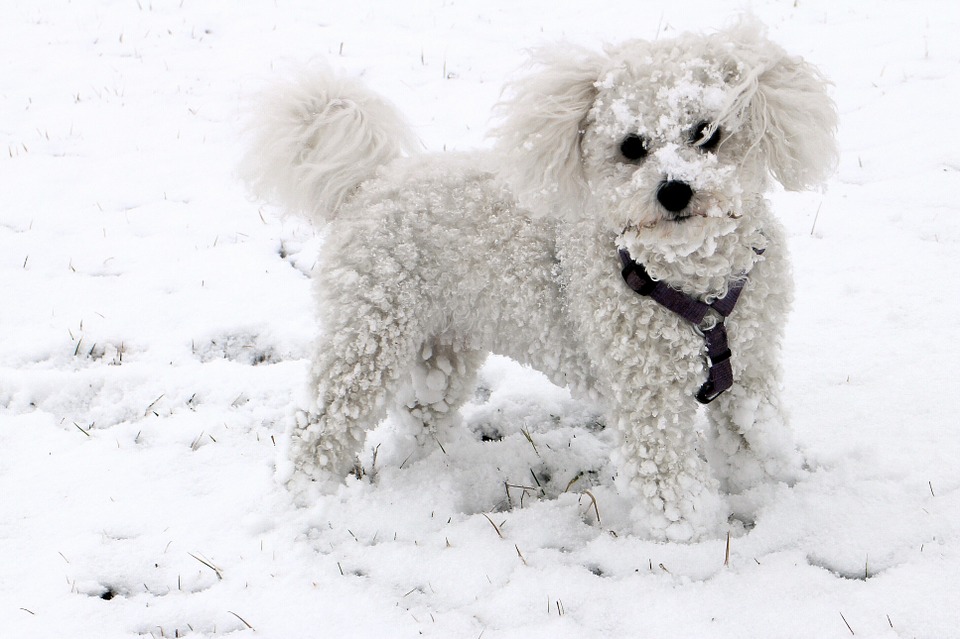Your Dog’s Health
Winter Hazards
Anyone who has spent a winter in Minnesota knows they can be tough. But, whether you love the snow or hate it, it’s important to know the dangers it can pose to your dog.
 Frostbite
Frostbite
The most obvious cold-weather danger for dogs and humans alike is hypothermia and frostbite. These problems occur when skin and underlying tissue freezes, leading to tissue damage. Dogs may have fur coats, but they’re at risk of this condition once temperatures drop below 32 degrees Fahrenheit. And, the colder it gets, the faster frostbite can develop (even within minutes), especially on paws, ears, and tails.
To protect your dog from frostbite, don’t leave them unattended outdoors in winter, keep walks as short as possible in cold conditions, and protect vulnerable areas with booties, coats, and snoods.
Ice-Melting Chemicals
Cold temps aren’t the only reason to teach your dog to wear booties. Chemicals used on sidewalks and streets are also detrimental to a dog’s health. When these products get on paws or fur, dogs often lick them off, ingesting calcium and sodium chloride – or salt.
Signs of salt toxicity in dogs include:
- Excessive water drinking or not drinking at all
- Vomiting
- Diarrhea
- Lethargy
- Seizures
- Off-balance or “drunken” behavior
Contact your vet if your dog has signs of salt toxicity.
Antifreeze Poisoning
Antifreeze may keep your car or ornamental pond running in winter, but it’s also highly toxic to dogs and cats. Unfortunately, it also has a sweet flavor that animals find irresistible and even a small taste – a lick or two! – can cause life-threatening side effects.
Signs of antifreeze poisoning occur in two stages. Within the first 3-6 hours of ingestion, dogs may stagger, vomit, fall down, and pee a lot. Then, they seem fine until the second stage begins, which can cause severe or fatal damage to the kidneys.
If you think your dog came in contact with antifreeze, contact your vet immediately.
Thin Ice
It’s tempting to let your dog off their leash to run, but you should always resist the urge if they don’t have a solid recall, especially near water.
Frozen lakes, ponds, rivers, and streams can seem like a safe space to let your dog burn excess energy, but dogs tragically fall through ice every year. These situations can become more grave when their humans try to save them.
Play it safe when you’re near ice. Check conditions in advance and keep your dog leashed if they don’t come reliably when called. And, if they do fall through the ice, call 9-1-1 instead of trying to rescue them yourself.
Burns & Fires
Who doesn’t love cozying up to a roaring fire or toasty space heater when the temperatures plunge? Chilly dogs do, too. This tendency may seem harmless, but it can lead to accidents, like burns and unintended house fires.
If your dog tries to get as close as possible to heat sources, take steps to provide safe options. Give them access to plenty of blankets, pet-safe heating pads, or sweaters, and make sure fires, wood-burning stoves, and space heaters remain out of reach.
Looking for ways to keep your dog active in winter? Don’t miss our favorite tips that have been Minnesota-tested.

